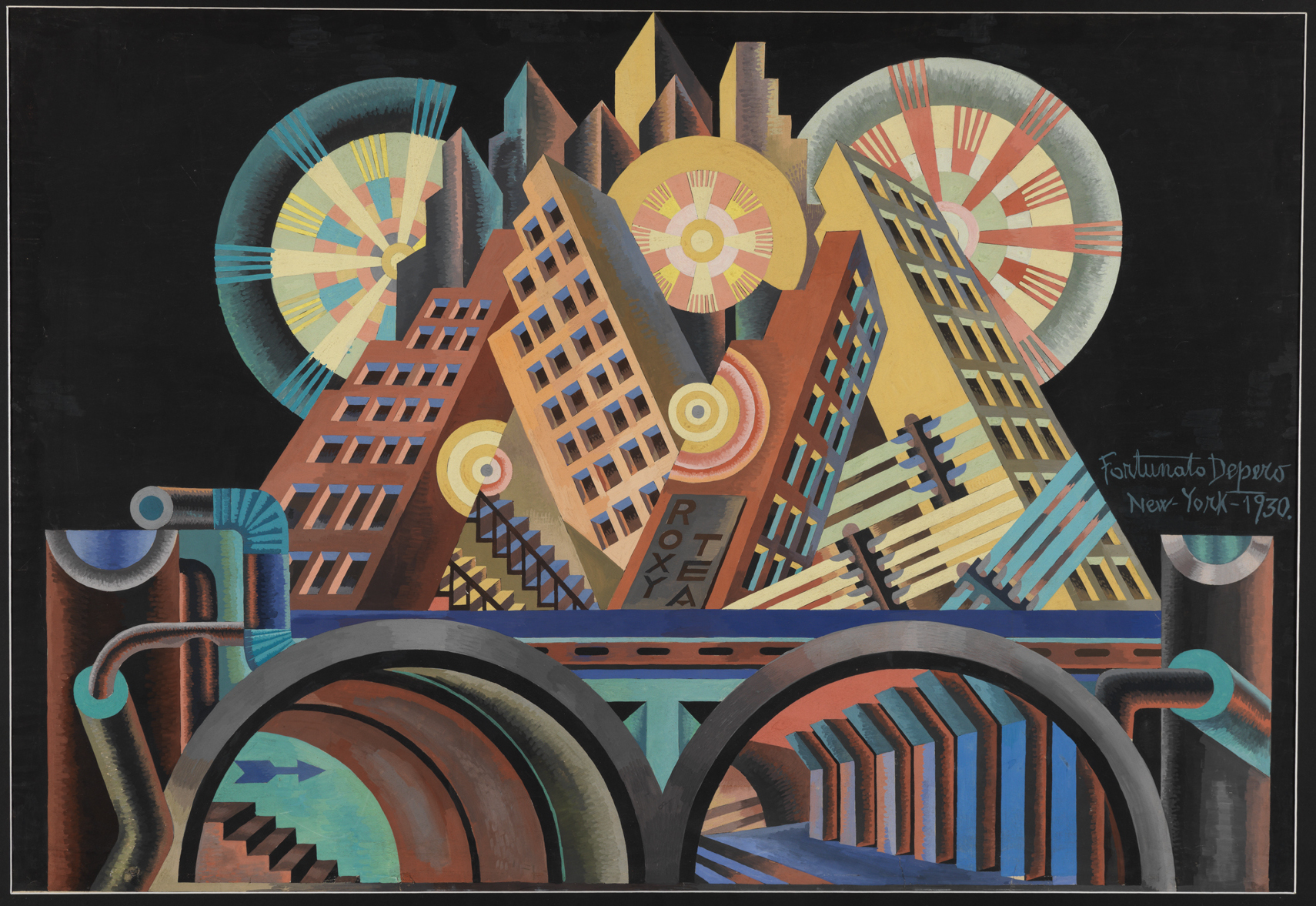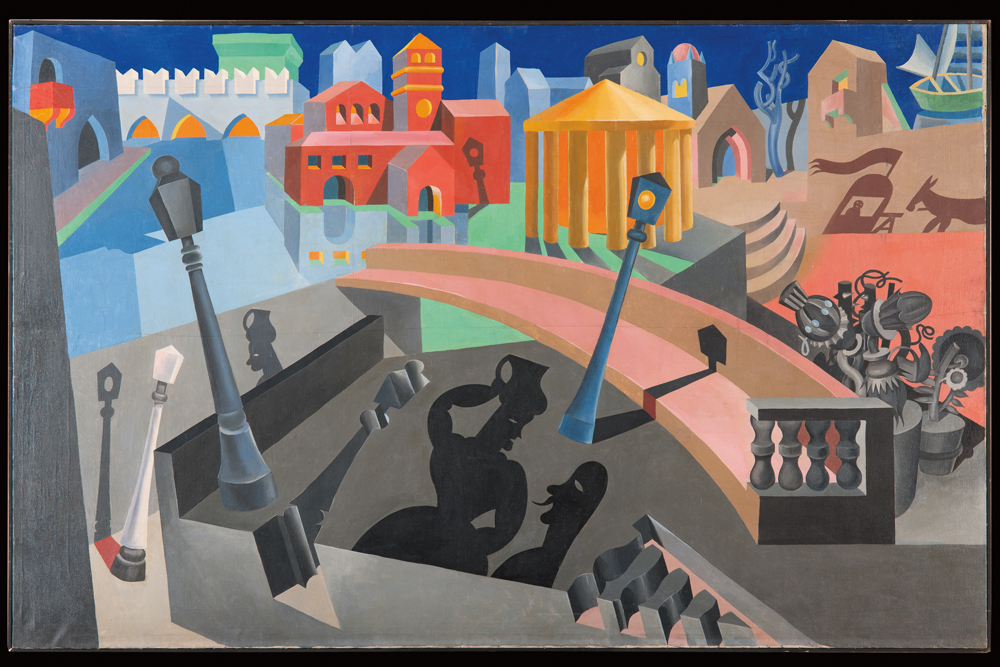What better idea than that of exposing in our New York City blog of CIMA two paintings by Fortunato Depero that underscore the vivacity and the dynamism of the metropolis. One currently exhibited in the exhibition, Reconstructing the Universe: Italian Futurism 1909-1944 at the Solomon R. Guggenheim Museum (Fig. 1: Grattacieli e tunnel [Skyscrapers and Tunnel]), while the other exhibited at the Center for Italian Modern Art (Fig. 2: Città meccanizzata dalle ombre [City Mechanized by Shadows]), both paintings confront two different metropolises as well as present two sites in which Depero lived and worked.

tempera on cardboard, 68 x 102 cm, Mart, Museo di arte moderna e contemporanea di Trento e Rovereto
Upon seeing Grattacieli e tunnel at the Guggenheim, I suddenly felt soaked into the everlasting engine of New York City. People coming and people leaving, taxi drivers speeding up and spinning around, skyscrapers steeply reaching the sky and an endless wire of subways topping up the map of the city. The vibrant, brilliant colors effectively render the chaotic vibe of the city that never sleeps, and if we give a closer look to the representation, we can almost sense the circular vortex in which the city drives us in. This energetic and mechanical movement of the metropolis is suggested by the contrast between the diagonal lines of the skyscrapers and the rounded shape of the tunnel and the gearing wheels. The sign that says “Roxy Teatro” on one of the buildings, indicates Depero’s engagement with the costume and stage design for the Roxy Theater in New York.
As an exponent of Italian Futurism, Depero was extremely attracted to America — especially New York City — considered as the emblem of modernity and progress of the Roaring Twenties. Even though the Futurist artist had a hard time in America in the late 1920s due to the Great Depression, several of his subsequent important projects took inspiration from what he had seen in this progressive country during his two-year stay. The catchy painting of Grattacieli e tunnel currently exhibited at the Guggenheim is, in fact, one of his greatest projects.

On the other hand, the representation of Città meccanizzata dalle ombre presents a different variant to the overwhelming depiction of New York City. Here we have the European metropolis of Rome, with its breathtaking ancient monuments and its overall classical atmosphere. Rome seems less frantic compared to New York City. Nevertheless, Depero still conveys in this painting a dynamic and animated motif typical of Futurism, exploited by the tilted streetlights, the curvilinear street on the front plane and the shadows cast on the city. As the title of the painting suggests, the city of Rome seems set in motion and mechanized by the shadows inspired by the Italian metaphysical artist Giorgio De Chirico. Like De Chirico, Depero plays a lot with shapes, shadows and light effects in order to deceive the viewer’s eye. If we pay more attention to the background, we can recognize some of the greatest architectural constructions located in Rome. The temple of Vesta in yellow, the Basilica of Our Lady in Trastevere in red and the Palazzo Venezia in white and blue — all colors that are completely unnatural and detached from reality.
From the depiction of Grattacieli e tunnel and Città meccanizzata dalle ombre, we can see how Depero envisioned the cities of New York and Rome as two avant-garde sites that could easily embrace and develop Futurism. These two progressive metropolises had all the qualities that this artistic movement was looking for and Depero, thanks to his personal experience in New York and Rome, managed to convey to the two paintings the Futuristic vibe he was longing for.
